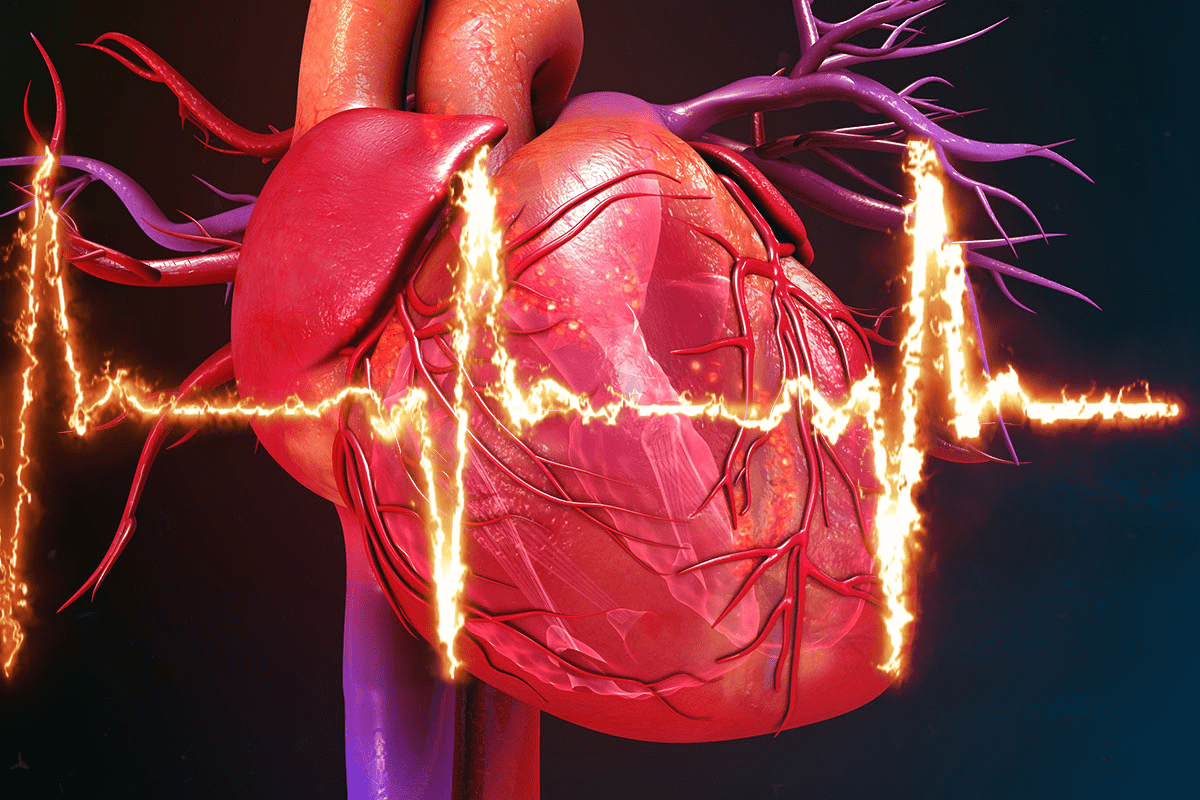Last Updated on November 27, 2025 by Bilal Hasdemir

Linear Accelerator (LINAC) radiotherapy is a top-notch cancer treatment. It uses high-energy beams to kill cancer cells by harming their DNA.
This advanced technology targets tumors accurately. It also protects healthy tissues nearby. Radiologyinfo.org says LINAC sends high-energy X-rays or electrons to tumors. This makes it key in modern cancer care.
LINAC has changed cancer treatment for the better. It offers better results for tough cases. The growing demand for it shows people want effective and precise treatments.
Key Takeaways
- LINAC radiotherapy is a highly effective cancer treatment.
- It uses focused, high-energy beams to destroy cancer cells.
- Precise targeting of tumors minimizes damage to healthy tissues.
- LINAC technology is advancing with image-guided techniques and AI integration.
- Its growing market reflects the increasing demand for effective cancer treatments.
What Is LINAC Radiation Treatment?
LINAC radiation treatment is a cutting-edge cancer therapy. It uses high-energy X-rays to target tumors with great precision. This method is key in fighting cancer because it works well on many types of tumors.
Definition and Basic Principles
LINAC, or Linear Accelerator, speeds up electrons to make high-energy X-rays. These X-rays are aimed at the tumor to kill cancer cells by damaging their DNA. This way, the tumor can’t grow anymore. LINAC treatment is precise, so it can give a lot of radiation to the tumor without harming nearby healthy tissues.
What makes LINAC treatment so effective is its ability to target tumors accurately. Experts say, “LINAC technology has changed radiation therapy, making it possible to treat tumors with unmatched precision.” (Source: Radiation Oncology Journal)
“LINAC radiation therapy is now the main treatment for many cancers. It offers patients a very effective option with few side effects.”
High-Energy X-rays and Their Medical Applications
High-energy X-rays from LINACs are vital for treating deep tumors. Doctors can adjust the X-ray energy to fit each patient’s needs. This flexibility, along with advanced imaging, helps target tumors accurately, leading to better results.
LINAC is not just for cancer. It’s also used for some non-cancer conditions, like certain neurological disorders. But it’s mostly used in cancer treatment.
LINAC radiation treatment is a big step forward in cancer therapy. It offers patients a precise and effective way to fight cancer. By understanding how LINAC works and its uses, patients can see the technology behind their treatment.
The Evolution of Linear Accelerator Technology
Advances in linear accelerator technology have changed radiation oncology a lot. The LINAC machine is now key in cancer treatment. It gives precise and effective radiation therapy.
Historical Development of Medical LINACs
The LINAC technology started in the mid-20th century for science. Its move to medical use was a big step in radiation therapy. A study on PMC shows LINAC tech has greatly improved treatment results.
At first, LINACs were used mainly for deep tumors. Now, thanks to better design and tech, they can target tumors more accurately. This means less harm to healthy tissues.
Technological Breakthroughs in Modern Systems
Today’s linear accelerator machines have many new features. One big one is the use of imaging tech like cone-beam CT (CBCT). This lets doctors check patient and tumor positions in real time.
There are also better beam delivery systems now. This means therapy can be more precise and flexible. Techniques like IMRT and VMAT are common, helping to protect healthy tissues better.
The LINAC tech market is growing fast. It’s over USD 5.5 billion now and expected to hit USD 7.8 billion by 2029. This growth comes from more people needing advanced radiation therapy and new technology.
How LINAC Radiation Treatment Works
Understanding LINAC radiation treatment starts with the physics of linear accelerators. This technology accelerates electrons to create high-energy X-rays. These X-rays then destroy cancer cells.
The Physics Behind Linear Accelerators
Linear accelerators, or LINACs, use microwave technology. They accelerate electrons along a straight path. As these electrons gain energy, they hit a metal target, producing X-rays.
The energy of these X-rays can be adjusted. This allows for treatment plans that fit the tumor’s size and depth.
The process involves several key components:
- Electron Gun: Produces the electrons that are accelerated.
- Accelerating Structure: Where the electrons gain energy.
- Target: Where the accelerated electrons collide to produce X-rays.
- Collimator: Shapes the X-ray beam to match the tumor’s dimensions.
Radiation Delivery Process
The radiation delivery in LINAC therapy is precise. It uses advanced techniques like Image-Guided Radiation Therapy (IGRT) and Intensity-Modulated Radiation Therapy (IMRT). IGRT allows for real-time imaging of the tumor during treatment.
IMRT enables the modulation of the radiation beam’s intensity. This conforms to the tumor’s shape, sparing healthy tissue.
Treatment Planning and Execution
Treatment planning is key in LINAC radiation therapy. A team of oncologists, radiologists, and physicists creates a personalized plan. They use imaging studies, define the target volume, and determine the optimal radiation dose.
The following table illustrates the steps involved in treatment planning and execution:
| Step | Description |
| 1. Imaging | CT scans or other imaging modalities are used to locate the tumor. |
| 2. Target Definition | The oncologist defines the tumor and critical structures. |
| 3. Treatment Planning | A personalized plan is created using specialized software. |
| 4. Dose Calculation | The radiation dose is calculated to ensure effective treatment. |
| 5. Treatment Delivery | The planned radiation is delivered to the patient using LINAC. |
Advanced image-guided techniques are improving outcomes for complex cases. This makes LINAC radiation therapy a highly effective treatment option for various types of cancer.
Types of Cancer Treated with LINAC Radiotherapy
LINAC radiotherapy is a key treatment for many cancers. It’s known for its precision and success in fighting tumors.
Common Cancer Applications
LINAC is used for cancers like prostate, pancreas, and liver. It delivers precise radiation to tumors, protecting healthy tissues.
Prostate Cancer: LINAC treats prostate cancer with great accuracy. It uses IMRT to focus on the tumor, sparing other areas.
Pancreatic Cancer: LINAC helps control pancreatic tumors and ease symptoms. It sends radiation directly to the cancer.
Liver Cancer: LINAC is effective for liver cancer, even when surgery is not possible. It targets the tumor with precision.
Specialized Treatment Protocols for Different Cancer Types
Each cancer type needs a special treatment plan with LINAC. These plans are made to fit each cancer’s needs for the best results.
Stereotactic body radiation therapy (SBRT) is used for small, precise tumors. It gives high doses of radiation in a few sessions, helping some patients.
LINAC’s Stereotactic Radiosurgery (SRS) is mainly for brain tumors. It offers precise treatment for these cancers.
LINAC’s flexibility lets doctors create personalized treatment plans. This approach improves cancer treatment for each patient.
Precision Targeting in LINAC Radiation Treatment
LINAC radiation treatment has greatly improved cancer treatment. This is thanks to advanced technologies. These technologies help doctors deliver radiation therapy with high accuracy.
Image-Guided Radiation Therapy (IGRT)
Image-Guided Radiation Therapy (IGRT) is key in LINAC systems today. It uses X-ray, CT, or MRI to see the tumor and its surroundings before and during treatment. This lets doctors make adjustments in real-time to hit the target area exactly.
IGRT boosts treatment accuracy by adjusting for tumor movement or changes. This is vital for tumors near important structures or those that move with breathing.
Intensity-Modulated Radiation Therapy (IMRT)
Intensity-Modulated Radiation Therapy (IMRT) is another advanced method in LINAC treatment. It changes the radiation beam’s intensity to deliver different doses to different parts of the tumor at once.
This method is great for complex or irregular tumors. By adjusting the radiation dose to the tumor’s needs, IMRT reduces harm to healthy tissues.
Stereotactic Radiosurgery (SRS) and Stereotactic Body Radiation Therapy (SBRT)
Stereotactic Radiosurgery (SRS) and Stereotactic Body Radiation Therapy (SBRT) are precise radiation therapies. SRS targets intracranial lesions, while SBRT targets extracranial areas.
These methods need exact patient positioning and immobilization, along with advanced imaging. This ensures a highly effective treatment with few side effects.
In summary, LINAC radiation treatment’s precision, thanks to IGRT, IMRT, SRS, and SBRT, has changed radiation oncology. These technologies allow doctors to treat cancer with unmatched accuracy. This has greatly improved cancer treatment outcomes.
Different Types of Medical Linear Accelerator Machines
The medical field has seen big steps forward in radiation therapy technology. This includes the development of various types of linear accelerator machines. These advancements have made cancer treatments more precise and effective.
Standard LINAC Systems in Hospital Settings
Standard LINAC systems are common in hospitals for radiation therapy. They are flexible and can treat many types of cancers. These systems are key in cancer treatment, providing reliable and effective radiation.
MR-LINAC Technology and Enhanced Precision
MR-LINAC technology combines MRI with LINAC technology. This allows for real-time imaging during treatment. MR-LINAC brings several benefits, like better accuracy and the chance to adjust treatment plans as needed.
The mix of MRI and LINAC technology is a big step forward in radiation therapy. It lets doctors watch the tumor and tissues around it closely. This ensures the treatment is given accurately.
Energy Level Variations and Their Clinical Applications
LINAC machines have different energy levels for various uses. The energy level needed depends on the tumor’s type and location. Different energy levels help create treatment plans that target tumors well while protecting healthy tissues.
| Energy Level | Clinical Application |
| Low Energy (4-6 MeV) | Superficial tumors |
| Medium Energy (10-15 MeV) | Tumors at moderate depth |
| High Energy (18-20 MeV) | Deep-seated tumors |
The variety in LINAC machines and their energy levels allows for custom treatment plans. By choosing the right energy level and technology, doctors can make treatments more effective and reduce side effects.
Benefits and Side Effects of LINAC Radiation Treatment
LINAC radiation treatment has changed cancer therapy a lot. It targets tumors precisely and protects healthy cells. This technology is key in treating many cancers.
Advantages Over Traditional Radiation Methods
LINAC radiation therapy has big advantages over old methods. It offers improved precision and reduced risk of side effects. It sends high-energy X-rays right to the tumor, treating it better while keeping other tissues safe.
This technology lets doctors tailor treatment plans for each patient. This makes the therapy more effective. It’s a big step forward in cancer treatment.
Potential Side Effects and Management Strategies
Even though LINAC treatment is precise, it can cause side effects. These include fatigue, skin reactions, and hair loss. It’s important to manage these side effects well to keep patients comfortable and their quality of life good.
Here are some ways to manage side effects:
- Regular monitoring by healthcare professionals
- Personalized care plans
- Patient education on self-care techniques
Long-term Outcomes and Quality of Life
The long-term results of LINAC treatment are mostly good. Many patients see a big decrease in tumor size or control. But how it affects quality of life can vary a lot.
It’s important to keep up with patients after treatment. This helps catch any late effects of radiation. It also lets doctors address any new concerns or problems. This way, patients get the best care throughout their treatment.
The Growing Market for LINAC Technology
The demand for effective cancer treatments is on the rise. This is making the LINAC market grow fast. More people getting cancer means we need better ways to treat it.
Current Market Size and Future Projections
The LINAC devices market is set to hit over USD 7.8 billion by 2029. This growth comes from more people needing cancer treatment and new LINAC tech. Hospitals and cancer centers are using LINAC systems more.
Market Projections: The global LINAC market is expected to grow at a 7.5% CAGR from 2022 to 2029.
| Year | Market Size (USD Billion) | CAGR (%) |
| 2022 | 4.5 | – |
| 2029 | 7.8 | 7.5 |
Factors Driving Market Growth
Several factors are boosting the LINAC market. These include more cancer cases, new radiation therapy tech, and a desire for non-invasive treatments.
- Increasing Cancer Prevalence: More cancer cases worldwide are driving the need for better treatments.
- Technological Advancements: New LINAC tech, like MR-LINAC and IMRT, is improving treatment results.
Leading Manufacturers and Recent Innovations
Top LINAC makers are innovating and expanding to meet demand. Varian Medical Systems, Elekta AB, and Siemens Healthineers are leading the way.
Recent Innovations: Varian Medical Systems has launched the Edge Radiosurgery System. It offers better precision in radiation delivery.
AI Integration and Future Innovations in LINAC Radiotherapy
Artificial Intelligence (AI) is changing cancer treatment with LINAC radiotherapy. It makes treatments more precise and effective. This new tech is opening doors for treating complex cases.
Artificial Intelligence Applications in Treatment Planning
AI is now used in LINAC treatment planning to boost accuracy and speed. It looks at lots of data to find the best treatment plans. This makes care more personal and predicts results better.
- Enhanced precision in targeting tumors
- Improved patient outcomes through personalized treatment plans
- Reduced treatment times due to optimized planning processes
AI helps with outlining tumors and organs at risk, a task that used to take a lot of time and skill. It makes planning faster and more consistent for all patients.
Advanced Imaging Integration for Improved Outcomes
Advanced imaging is being added to LINAC systems to improve treatment accuracy. Image-Guided Radiation Therapy (IGRT) and real-time tracking let doctors adjust plans as needed. This is based on the exact location and movement of tumors.
These new tools are great for tumors near important areas or those that move with breathing. They help make radiation more accurate. This reduces side effects and improves how well patients do.
Emerging Technologies and Ongoing Research
The future of LINAC radiotherapy is also being shaped by new tech like machine learning and deep learning. These could make treatments even more tailored to each patient. They could also predict how patients will respond and find new ways to treat cancer.
Key areas of ongoing research include:
- Development of more sophisticated AI algorithms for treatment planning
- Integration of functional imaging modalities to better understand tumor biology
- Exploration of new radiation delivery techniques that can be adapted in real-time
As these technologies get better, they will be key in the future of LINAC radiotherapy. They will make treatments more effective, personal, and available to more people around the world.
Conclusion: The Future of LINAC Radiation in Cancer Treatment
LINAC radiation treatment is changing cancer care for the better. It’s precise and effective. As technology gets better, LINAC’s future looks bright, with new ways to treat cancer.
The future of LINAC is linked to better cancer treatments. New technologies are making radiation therapy even more effective. Research and development will keep making LINAC treatments safer and more effective.
With the help of artificial intelligence and advanced imaging, LINAC’s role in cancer care will grow. The future of LINAC looks very promising. It could lead to even better results for patients and a better quality of life.
FAQ
What is a linear accelerator (LINAC) in radiation therapy?
A LINAC is a device used in cancer treatment. It sends high-energy X-rays or electrons to tumors. This helps kill cancer cells while protecting healthy tissue.
How does a LINAC machine work?
A LINAC machine accelerates electrons to high speeds. These electrons then hit a metal target, creating high-energy X-rays. These X-rays are aimed at the tumor, delivering a precise dose of radiation.
What types of cancer are typically treated with LINAC radiotherapy?
LINAC radiotherapy treats many cancers, like brain, breast, lung, and prostate tumors. Its versatility makes it suitable for various cancer types and treatment plans.
What is the difference between LINAC and traditional radiation therapy?
LINAC therapy is more precise than traditional radiation therapy. It uses advanced technologies like IGRT and IMRT. This precision reduces side effects and improves treatment results.
What are the benefits of using LINAC radiation treatment?
LINAC treatment delivers precise doses of radiation to tumors. This minimizes damage to healthy tissue, reduces side effects, and improves treatment outcomes for complex cases.
What are the possible side effects of LINAC radiation treatment?
Side effects of LINAC treatment vary based on the radiation dose and location. Common side effects include fatigue, skin changes, and pain. There are strategies to manage these side effects.
How is LINAC radiation treatment planned and executed?
A team of healthcare professionals plans LINAC treatment. This team includes radiation oncologists, medical physicists, and radiation therapists. They use imaging studies and simulation to ensure precise radiation delivery.
What is the role of AI in LINAC radiotherapy?
AI is being used in LINAC radiotherapy to improve treatment planning. It automates tasks and enhances precision. AI applications include predictive analytics and personalized treatment planning.
What is the current market size for LINAC technology, and what are the future projections?
The LINAC technology market is growing fast. This growth is due to increased demand for cancer treatment and advancements in radiation therapy. Future projections show continued growth, driven by technological innovations and increasing cancer incidence.
What are the different types of medical linear accelerator machines available?
Medical linear accelerator machines vary in design and features. They include standard LINAC systems, MR-LINAC technology, and different energy levels. Each type has its clinical applications and benefits, providing options for cancer treatment.
Reference:
Cambridge University Hospitals NHS Foundation Trust – Bladder care and management
https://www.cuh.nhs.uk/patient-information/bladder-care-and-management
Comprehensive patient information on urinary bladder function, causes of incomplete emptying, and actionable techniques including lifestyle changes and exercises.






